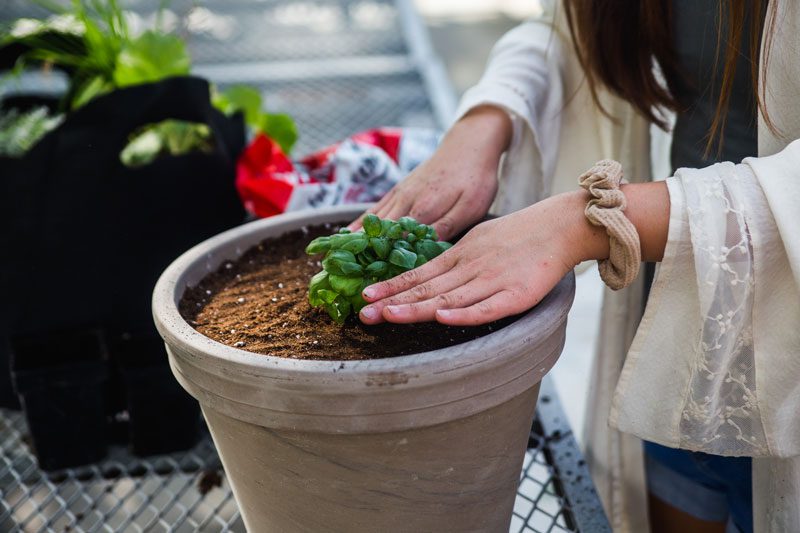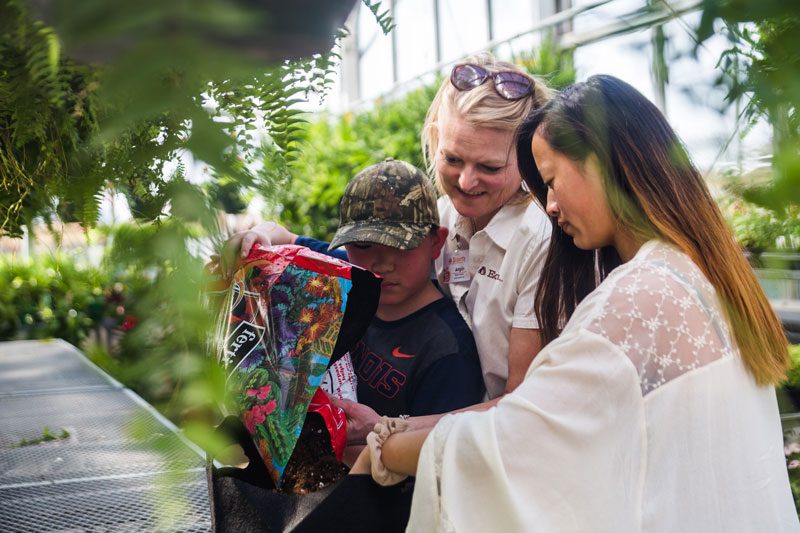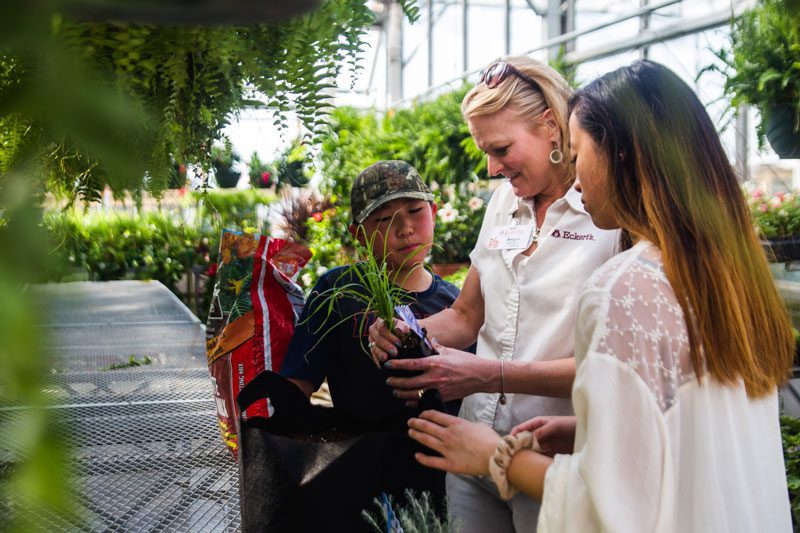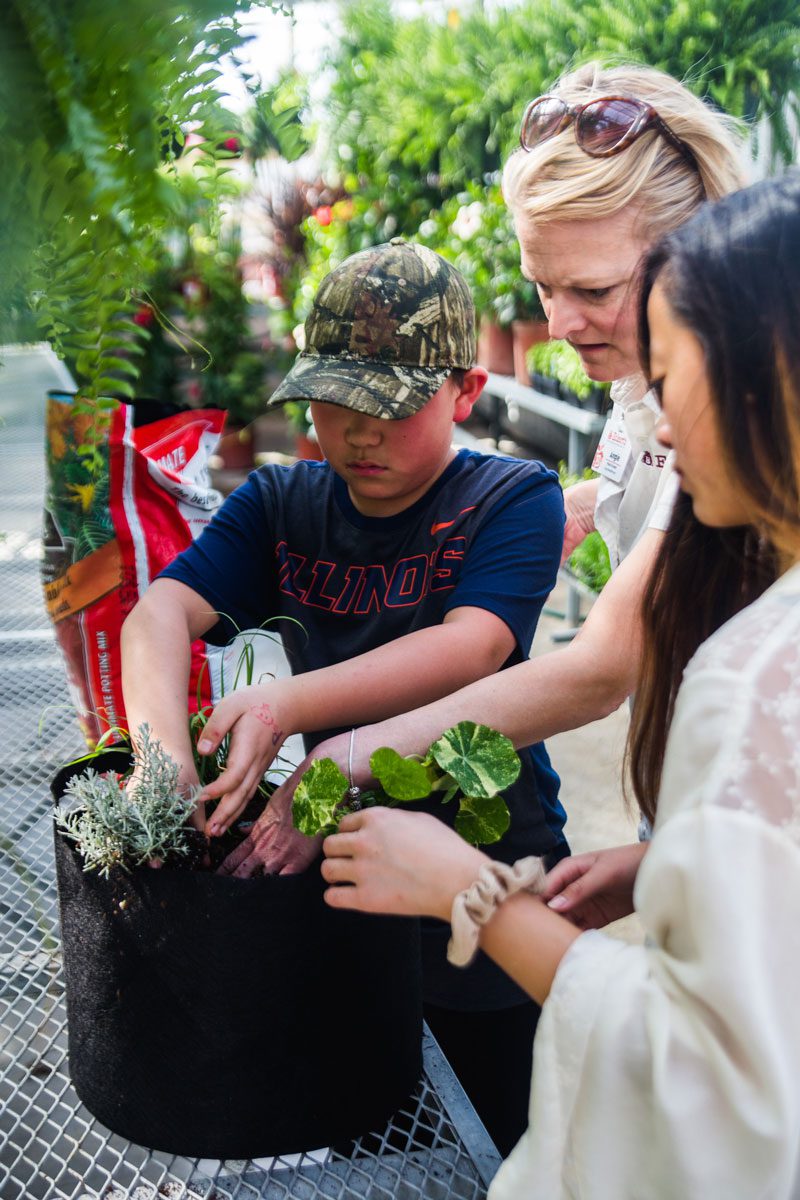I look forward to planting herbs every spring because they are fun and easy to grow and I really enjoy using them to amp up flavor in the kitchen. Herbs can also be ornamental in the landscape. We add herbs in our landscape beds around the Belleville Country Store and mix them with other flowers in large planters on the patio surrounding our restaurant.
Over the years, I have learned to plant herbs at home, based on how often I use them. For example, I tend to use chives, parsley and basil a lot in my kitchen. I find spots for these herbs just outside my kitchen doors so that I have quick access to them.
This year my kids are interested in growing herbs too. Theo picked out a lovely silver-leafed herb called dwarf curry. It is grown for ornamental purposes because it adds fine texture and color to a mixed planter. Ella is new fan of nasturtium because I told her the flowers are beautiful as well as edible. As for me, I am drawn to culinary herbs, as mentioned, like basil, rosemary, parsley and chives. These are my work horse herbs in the kitchen. I am also a fan of lemon grass for its mosquito repelling attributes.
I thought I would share a few tips for beginning herb growers. I hope this will inspire herb newbies to find an empty pot or an open spot in the landscape to “give it a grow.”
1. Most herbs are fairly low-maintenance and easy to grow. If growing in a pot, use a basic potting mix or very well-drained garden soil. Herbs tend to grow best in light weight soils (not heavy clay soils). I like to use Fertilome Potting Mix. This mix is used in all of my home planters, all of the planters around Eckert’s, as well as the pots in downtown Belleville. Herbs do not require rich soils so there is no need to add organic material or compost.
2. There is no need to fertilize culinary herbs. I don’t fertilize my culinary herbs because fertilizer can sometimes diminish the intensity of the flavorful oils in the leaves.
3. Herbs can be annual, biennial or perennial. Plan accordingly. Annual herbs need to be replanted year after year in the Midwest because they die in the cold of winter. Biennial herbs, like parsley, want to flower in their second year. This makes it hard to use them for a full second season. I recommend treating biennial herbs as annuals (plant a new parsley each year). Chives, some lavenders, English thyme and sage are all perennials. These plants will return year after year if they are happy campers and are grown in the ground (container grown herbs do not reliably behave as perennials.)
4. It is helpful to harvest fresh herbs at least once a week. Use a scissors to harvest up to 1/3 of the herb plant at a time. Regularly cuttings encourage your herbs to grow.
5. Fresh cut culinary herbs are most commonly added to recipes after the cooking steps. In contrast, dried herbs are often added to the recipe during the cooking stages. I enjoy using fresh herbs in Herb Butter and Herb Marinated Mozzarella. Fresh herbs are a yummy addition to scrambled eggs. Make a fancy sauce (aioli) for your sandwich or potato salad by adding a few tablespoons of fresh snipped herbs to 1/3 cup mayonnaise.
If you have questions about growing herbs, please stop by our garden center and chat with our plant experts or shoot me an email at angie.eckert@eckerts.com. I hope these sunny days will inspire you to get your hands dirty and plant some herbs. They are a great way to add more flavor and beauty to your world!
Let’s get growing,
Angie Eckert





Be the first to leave a comment!